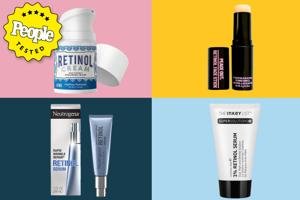Beauty products make us feel good, but their packaging often harms the environment. The beauty industry creates a huge amount of waste.
Over 120 billion units of packaging are produced each year for cosmetics and personal care items. Most of this ends up in landfills or the ocean.
Plastic is a big problem in beauty packaging. It’s cheap and practical, but it takes hundreds of years to break down.
Many beauty items come in small containers that are hard to recycle. This leads to more waste. The industry’s rapid growth has made this issue worse in recent years.
We can all play a part in reducing this impact. Choosing products with less packaging or recyclable materials helps.
Some brands now offer refillable options or packaging made from recycled plastic. As consumers, our choices can push companies to make positive changes.
Key Takeaways
- Beauty product packaging creates massive amounts of waste annually
- Plastic containers are a major source of environmental harm in the industry
- Consumer choices can drive companies towards more sustainable packaging options
The Pervasiveness of Packaging in the Beauty Industry
Packaging plays a huge role in the beauty industry. It protects products, attracts customers, and shapes brand identity. But it also creates a lot of waste and harms the environment.
Materials and Production
The cosmetics industry uses many packaging materials. Plastic is most common, but we also see glass, aluminum, and paper.
Making these materials takes a lot of energy and raw resources.
Plastic production releases greenhouse gases. It uses fossil fuels too. Glass needs high heat to make, using lots of energy.
Aluminum mining can damage ecosystems. Paper packaging often comes from trees cut down for this purpose.
Many beauty products use mixed materials. This can include plastic pumps, glass jars, and paper boxes. Using different materials makes items harder to recycle.
Waste and Environmental Effects
Beauty packaging waste is a big problem. Most of it ends up in landfills or the ocean.
Plastic waste harms marine life and pollutes water. It can take hundreds of years to break down.
Single-use plastics are very common in beauty products. These include samples, sheet masks, and travel-sized items. They create a lot of waste for little product use.
Microplastics from beauty packaging also cause issues. These tiny plastic bits end up in oceans and harm sea creatures. They can even enter our food chain.
Regulations and Industry Standards
Rules about beauty packaging vary by country. In the U.S., the FDA oversees cosmetic packaging safety. But they don’t regulate environmental impact much.
Some places ban certain materials. The EU restricts single-use plastics in many products. California has strict rules about recyclable packaging claims.
The beauty industry is working on sustainable packaging. Many brands now use recycled materials. Others try refillable containers. But progress is slow. Cost and product protection remain big concerns.
Strategies for Sustainable Beauty
The beauty industry is taking steps to reduce its environmental impact. We’re seeing new packaging designs, greener ingredients, and a push towards circular practices.
Innovations in Sustainable Packaging
Beauty brands are exploring eco-friendly packaging options.
Some use recycled plastics or biodegradable materials. Others focus on refillable containers to cut waste.
Brands like Everist offer waterless products in aluminum tubes. This reduces water use and shipping weight. Some companies use plant-based plastics made from sugarcane or corn.
Paper and cardboard packaging is gaining popularity. These materials are easier to recycle than plastic. Lush Cosmetics sells many products “naked” with no packaging at all.
Impact of Ingredients and Formulation on the Environment
We’re seeing a shift towards natural and sustainable ingredients in beauty products. Many brands are removing toxic chemicals and synthetic materials from their formulas.
Water-free products are becoming more common. These concentrated formulas use less packaging and reduce shipping emissions. Some companies use upcycled ingredients from food waste.
Biodegradable formulas help reduce water pollution. Brands are also working to source ingredients responsibly. This includes fair trade practices and protecting biodiversity.
Towards a Circular Economy in Cosmetics
The beauty industry is adopting circular economy principles. This means designing products with their entire lifecycle in mind.
Many brands now offer recycling programs.
Customers can return empty containers to be cleaned and reused. Some companies use recycled materials in their packaging.
We’re also seeing more reusable products like cloth makeup removers. These replace single-use cotton pads. Some brands are exploring rental or subscription models for beauty tools.
Supply chain improvements are key. Brands are working with suppliers to reduce waste and emissions. Life cycle assessments help identify areas for improvement.
Frequently Asked Questions
Beauty product packaging has significant environmental impacts. Many people have questions about sustainable alternatives, pollution effects, and ways to reduce waste. Let’s explore some common concerns.
What alternative materials are being explored for sustainable beauty packaging?
Companies are testing plant-based plastics, recycled materials, and biodegradable options.
Some use bamboo, glass, or aluminum containers. Refillable packaging is also gaining popularity. This allows customers to reuse the original container multiple times.
How does the production of beauty product packaging contribute to environmental pollution?
Manufacturing plastic packaging releases greenhouse gases. It also uses non-renewable resources like oil.
The cosmetics industry produces about 120 billion units of packaging yearly. Most of this ends up in landfills or oceans.
What are the consequences of microplastics from cosmetics on marine life?
Microplastics in beauty products wash into waterways. Fish and other sea creatures often mistake these tiny particles for food.
This can lead to malnutrition and other health issues for marine life. It also introduces plastic into the food chain.
What initiatives are in place to reduce the carbon footprint of the beauty industry?
Many brands are switching to renewable energy in their factories. Some use more efficient transportation methods.
Companies are also redesigning packaging to use less material. This reduces waste and lowers shipping emissions.
In what ways can consumers influence the reduction of beauty packaging waste?
We can choose products with minimal or recyclable packaging.
Supporting brands that offer refills or package-free options helps too. Properly recycling beauty containers makes a big difference.
Some stores even have take-back programs for empty packaging.
How are beauty companies addressing the environmental concerns of packaging sustainability?
Many are investing in research for eco-friendly materials. Some partner with environmental organizations to improve their practices.
Brands are also educating customers about proper recycling. Clear labeling helps people dispose of packaging correctly.
Statistic Table
We’ve compiled key statistics on beauty product packaging’s environmental impact. These numbers highlight the urgency of addressing this issue.
Here’s a table summarizing important figures:
| Statistic | Value |
|---|---|
| Annual cosmetic packaging units | 120 billion |
| Global cosmetics market value by 2025 | $758.4 billion |
| Cosmetic packaging market value in 2020 | $34.98 billion |
| Projected cosmetic packaging market value by 2028 | $53.78 billion |
| Annual growth rate of cosmetic packaging market | 5.76% |
These numbers are eye-opening. The sheer volume of packaging units produced each year is staggering.
The beauty industry’s growth is impressive, but it comes with environmental costs. As the market expands, so does the amount of packaging waste.
We must consider the long-term effects of this trend. The projected increase in packaging market value suggests that without intervention, the problem will only worsen.
It’s clear that sustainable solutions are needed. The beauty industry must find ways to reduce packaging waste while meeting consumer demands.



